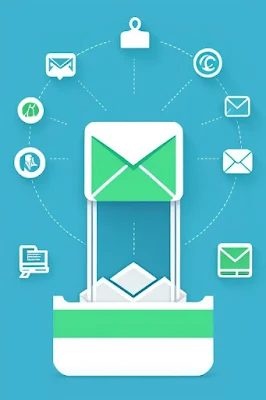In the competitive world of email marketing, ensuring that your emails reach your subscribers' inboxes is crucial. One key factor that influences deliverability is your email spam score. This score determines the likelihood of your email being marked as spam. Unfortunately, many marketers inadvertently lower their spam scores by making common mistakes. Here, we'll explore these errors and offer practical solutions to improve your email deliverability.
1. Using Misleading or Spammy Subject Lines
The subject line is the first thing recipients and spam filters see. Using misleading or overly promotional subject lines can raise red flags. Phrases like "Act Now!", "Free Offer", or "Congratulations!" are often associated with spam.
Solution: Craft clear and honest subject lines. Instead of "Limited Time Offer! Buy Now!", try something like "Special Discount on Our Best-Selling Products". This approach maintains transparency and builds trust with your audience.
2. Lack of Personalization
Sending generic emails without any personalization can signal to spam filters that your email is unsolicited. Emails that don't address the recipient by name or fail to include relevant content are more likely to be marked as spam.
Solution: Use personalization tokens to address recipients by their first names. Tailor the content to their interests or previous interactions with your brand. For instance, "Hi John, Check Out Our New Arrivals Just for You!" feels more personal and engaging.
3. Overuse of Spam Trigger Words
Certain words and phrases are commonly flagged by spam filters. These include terms like "free", "guaranteed", "urgent", and "exclusive deal". Overusing these words can significantly lower your spam score.
Solution: Avoid relying heavily on these trigger words. Instead, focus on creating compelling and informative content. For example, replace "Free Trial" with "Start Your Complimentary Trial Today".
4. Poor Email List Management
Sending emails to outdated or unengaged lists can harm your sender reputation. High bounce rates and spam complaints are clear indicators to spam filters that your emails may not be wanted.
Solution: Regularly clean your email list to remove inactive or invalid addresses. Implement re-engagement campaigns to win back inactive subscribers. If they remain unresponsive, it's best to remove them from your list.
5. Unbalanced Text-to-Image Ratio
Emails with a high image-to-text ratio often get flagged by spam filters. This is because many spam emails rely heavily on images to convey their message while bypassing text-based filters.
Solution: Ensure a balanced mix of text and images in your emails. Use images to enhance your message, not replace it. A good rule of thumb is to maintain a 60:40 text-to-image ratio.
6. Missing or Incomplete Email Authentication
Email authentication protocols like SPF, DKIM, and DMARC are crucial for verifying your identity as a sender. Without proper authentication, your emails are more likely to be marked as spam.
Solution: Set up and configure SPF, DKIM, and DMARC records for your domain. These protocols help build trust with ISPs and improve your email deliverability. Most email service providers offer guides on how to set up these records.
7. Lack of Unsubscribe Option
Not providing an unsubscribe link in your emails is not only unethical but also illegal under regulations like the CAN-SPAM Act. It also leads to higher spam complaints, as recipients who can't opt-out are likely to mark your email as spam.
Solution: Always include a visible and functional unsubscribe link in your emails. Make it easy for recipients to opt-out if they choose to. This transparency builds trust and helps maintain a positive sender reputation.
8. Inconsistent Sending Frequency
Inconsistent email sending patterns can confuse spam filters and your recipients. Sending too many emails in a short period or going silent for long stretches can raise suspicions.
Solution: Establish a consistent sending schedule. Whether it's weekly, bi-weekly, or monthly, stick to a regular cadence. Consistency helps build anticipation and trust with your audience.
9. Neglecting Mobile Optimization
With the increasing use of mobile devices, emails that aren't optimized for mobile viewing can lead to higher spam complaints. Poorly formatted emails that are hard to read on mobile devices frustrate recipients.
Solution: Design your emails with mobile users in mind. Use responsive design techniques to ensure your emails look great on any device. Test your emails on various devices before sending them out.
Conclusion
Improving your email spam score is essential for ensuring your messages reach your audience. By avoiding these common mistakes, you can enhance your email deliverability and build stronger relationships with your subscribers. Regularly reviewing and adjusting your email practices will help you stay ahead in the ever-evolving landscape of email marketing.
Call to Action
Ready to improve your email spam score? Try testmailscore.com, a comprehensive and completely free email spam score checking service. Sign up today and see the difference it makes in your email campaigns. Subscribe to our blog for more tips and updates on email deliverability and best practices.





